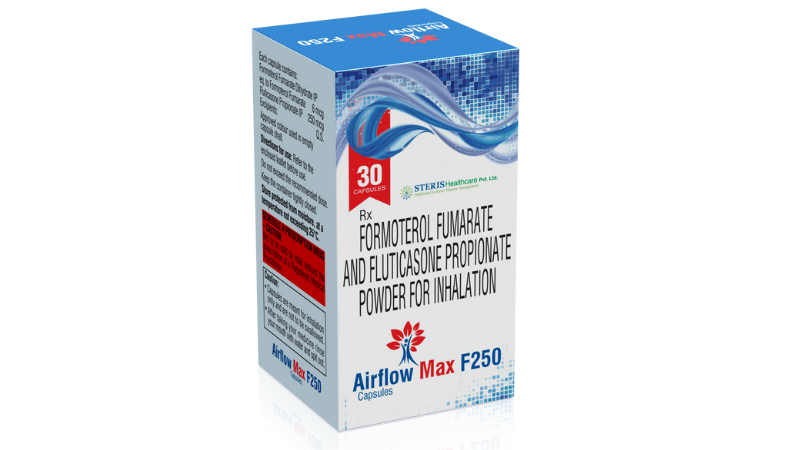"Formoterol fumarate and fluticasone propionate
Jun 29, 2023
Formoterol fumarate and fluticasone propionate
R/C AIRFLOW MAX F250 are two active ingredients commonly used in combination in the treatment of asthma and chronic obstructive pulmonary disease (COPD). Let's explore each of these substances:
Formoterol fumarate: Formoterol fumarate is a long-acting beta-2 agonist (LABA) bronchodilator. R/C AIRFLOW MAX F250 works by relaxing the smooth muscles in the airways, thereby improving breathing and increasing airflow to the lungs. R/C AIRFLOW MAX F250 is commonly used as a maintenance treatment to prevent and control symptoms of asthma and COPD.
Formoterol fumarate has a rapid onset of action and a relatively long duration of effect, making it suitable for both acute relief of bronchospasm and long-term management of respiratory conditions. It is typically inhaled using an inhaler device, such as a metered-dose inhaler or dry powder inhaler.
Fluticasone propionate: Fluticasone propionate is a corticosteroid, specifically a synthetic glucocorticoid. It works by reducing inflammation in the airways, which helps to alleviate symptoms and prevent exacerbations in individuals with asthma and COPD. Fluticasone propionate is commonly used as an inhaled corticosteroid (ICS) in combination with a LABA like formoterol fumarate.
By combining R/C AIRFLOW MAX F250 in a single inhaler, both the anti-inflammatory effects of the corticosteroid and the bronchodilator effects of the LABA can be achieved. This combination therapy aims to provide comprehensive control of symptoms and reduce the risk of exacerbations in individuals with asthma or COPD.
steris deals in Generic medicines are medications that contain the same active ingredient(s) as a brand-name drug and are intended to have the same therapeutic effect. They are typically produced and sold under their chemical or active ingredient name, rather than a specific brand name.
Here are some key points about generic medicines:
Active Ingredient: Generic medicines have the same active ingredient(s) as the corresponding brand-name drug. The active ingredient is the chemical component responsible for the medication's therapeutic effect.
Bioequivalence: Generic medicines must demonstrate bioequivalence to the brand-name drug. This means they must have similar pharmacokinetic properties, such as rate and extent of absorption, in the body. Regulatory authorities set specific criteria for bioequivalence to ensure that generic medicines perform similarly to their brand-name counterparts.
Cost Savings: Generic medicines are often more affordable than brand-name drugs. This is because generic manufacturers do not have to invest in extensive research and development or marketing campaigns, as the efficacy and safety of the active ingredient have already been established by the brand-name drug.
For further information please contact:
info@sterispharma.com
Order Now - https://www.sterisonline.com/product/r-c-airflow-max-f250-133712
Recent Post

Vitamin E and Omega 3 Fatty Acids:The Perfect Duo for Immunity & Wellness

Lurasidone Hydrochloride Price: A Complete Medical Insight

Rizatriptan Benzoate Orally Disintegrating Tablet: A Fast-Acting Solution for Migraine Relief

Mirabegron and Solifenacin succinate tablets uses

Linagliptin 5 mg Tablet: What You Need to Know Before Starting Treatment

Memantine 5mg Tablet Price, Uses & Where to Buy Safely Online

Enzalutamide Tablets: Effectiveness and Patient Experiences

Mycophenolate Mofetil 250 mg: Essential Information for Kidney Transplant Patients

Gabapentin and Lidocaine Hydrochloride Gel: Advanced Relief for Neuropathic Pain

Dapagliflozin and Metformin Tablet: A Dual-Action Approach to Blood Sugar Control

